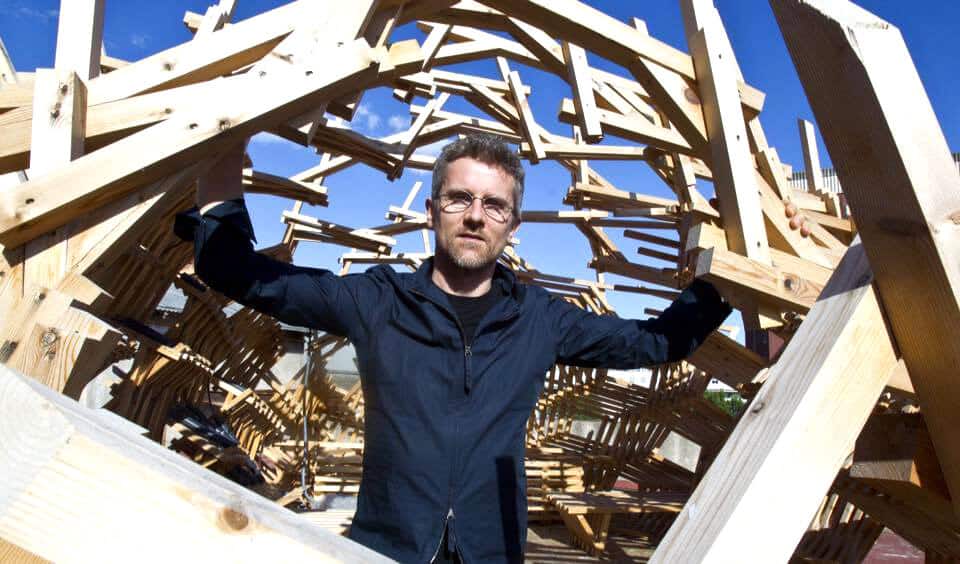The next generation of Grand Designs will be shaped by artificial intelligence, with AI “an empowering tool” in the march towards building more sustainable buildings out of wood. That is according to Kevin McCloud, the long-time host of Grand Designs Live, who spoke about the future of design on the eve of the show’s 25th anniversary.
“I think AI is going to affect architectural design – it’s going to be so much easier to replicate design patterns to use AI to produce renderings, drawings, prototype models and solve problems,” Mr McCloud told the UK-based Independent overnight. “I think the matching of technologies with AI producing thin film, infrared, heating elements, or stick-on solar panels, which uses one-thousandths of the resources of conventional solar panels, is where it gets really interesting.”
“We’ve seen over the past 25 years an increase in the use of synthetic materials in the building,” he said, adding that cross-laminated timber is a real game-changer for sustainable construction over the next 25 years.
“I think in 25 years from now, we’ll be using much less steel (and) much less concrete, too. The concrete we will be using will be zero carbon, or it’ll be carbon sequestered. Steel will be replaced by (this wood) – and we’ll be using a lot more laminated timber – and it’ll be home grown too.”
3.5 billion cubic metres of timber is key to a post-steel-and-concrete world
According to Michael Barnard, a climate futurist and strategist, the next generation of greener buildings will use more engineered timber (including cross-laminated timber) as a substitute for steel and concrete.
“With the rise in the cost of cement and the demand reduction, the alternatives spring into action,” Mr Barnard said in June, “in my assessment, the largest of these is likely to be engineered timber. The structural strength equals reinforced concrete with a fifth of the mass. Every ton of engineered timber displaces 4.8 tons of reinforced concrete, hence the roughly 0.5 tons of cement required for the concrete.”

However, to meet future demand, the key is to better utilise the 3.5 billion cubic metres of wood harvested every year. “Much of that goes to single-use products, from chopsticks to tissues to paper towels,” Mr Barnard said: “We harvest so much that we can displace an enormous amount of cement and contract simply by diverting just a subset of single-use wood and paper products to engineered timber.”
AI is now being used to improve the utilisation of timber…
And it’s not just diverting single-use products into higher-value products. Engineers are now using AI to improve log utilisation (and recover more from the tree) when manufacturing cross-laminated timber.
Known as “AI Timber,” founders Carlo Ratti and Mykola Murashko use artificial intelligence to scan raw logs and see them into non-uniform, irregularly shaped boards. It then identifies the optimal sequence to reconnect them to form a manufactured CLT panel.

According to Mr Ratti, the push to develop “AI Timber” was driven by the push to decarbonise construction, with the UN claiming that concrete, steel and aluminium are responsible for 23% of global emissions:
“However, the industrial sawing process of cutting unique trees into standardised panels generates a large amount of wood waste,” Mr Ratti said, adding that AI can reduce wood waste by up to 30%. “It’s also beautiful: the irregular geometry celebrates the tree’s original shape. We are using the artificial to bring out the brilliance of the natural.”
- To learn how architects now use AI to design skyscrapers out of mass timber products – click here for Wood Central’s special feature.






